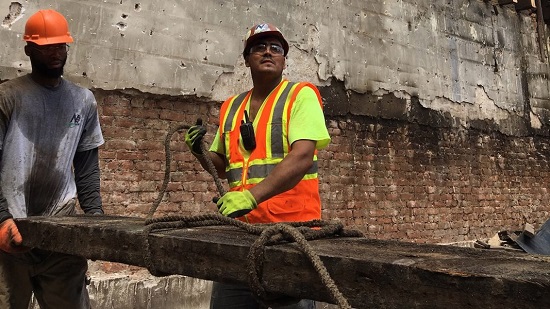 Sunday, April 28, 2024
Sunday, April 28, 2024  Sunday, April 28, 2024
Sunday, April 28, 2024 
Old-growth forests once covered the eastern United States, but they were almost entirely decimated by the early 1900s after centuries of commercial logging. Yet wood from those forests survives, much of it tucked behind the walls of New York City buildings. The tree rings on these timbers are sources of historical climate data, which is why researchers are working to recover them.
At the Tree Ring Lab at Columbia University’s Lamont–Doherty Earth Observatory, a team of dendrochronologists—scientists who study tree rings to determine the dates of past events—is collecting samples of the timbers from demolition sites around the city. They focus on buildings constructed before steel framing became common in the 1920s and 1930s, since most of these structures were built with wood from old-growth forests in the U.S.
Every year a tree grows, it adds new rings that reveal the environmental conditions of the time. In general terms, a wider ring indicates more rainfall in a growing season than a thinner ring. Rarely, in some trees at high elevations, the variation in the size of the rings reflect fluctuations in temperature instead, with wider rings indicating warmer weather.
Mukund Rao, one of the leaders of the Tree Ring Lab project, says that many of the trees used in the construction of New York City were 200 to 300 years old when they were logged over a century ago. That means they sprouted long before the founding of the U.S., in some cases in the 1500s or earlier. Their rings can help scientists fill in gaps in the existing data.
“Having these really old timbers allow us to go further back in time to understand the past,” says Rao. This makes it possible for scientists to put recent changes in climate patterns into greater historical context.
Keep reading on NationalGeographic.com